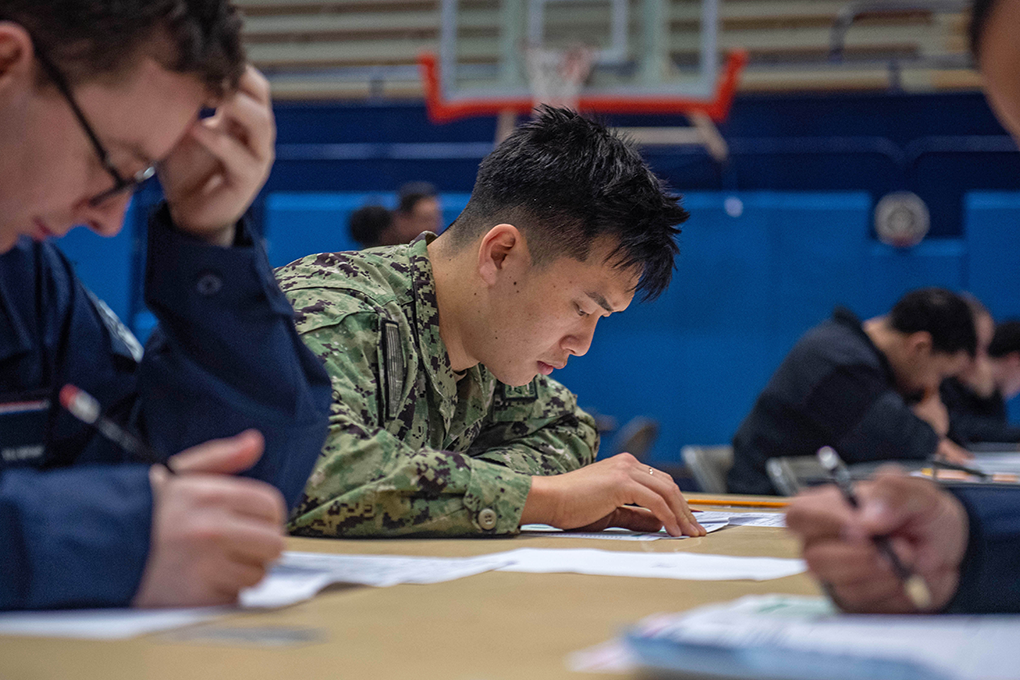If you’re an active-duty service member approaching your final months in the military, you might be thinking about what’s next. The transition to civilian life can be overwhelming, and finding the right job or career path can feel like a daunting task. Fortunately, the SkillBridge program is here to help. This Department of Defense (DoD) initiative is designed to bridge the gap between military and civilian careers by offering service members opportunities for civilian training, internships, or apprenticeships during their final 180 days of service. If you’re wondering what SkillBridge is, keep reading to find out how it can help you successfully make the jump into civilian life.
What Exactly Is SkillBridge?
The SkillBridge program allows active-duty service members to participate in civilian training and internships with approved industry partners. It provides the unique opportunity to gain hands-on experience in a civilian job while still receiving full military pay and benefits during the final 180 days of service. Whether you’re interested in a new career field or want to develop your existing skills, SkillBridge offers a valuable way to transition smoothly into the civilian workforce.
While some military programs only provide classroom learning, SkillBridge gives you the chance to get practical, on-the-job experience. This can make a big difference when it comes to securing a job after your service ends.
How Does the DoD SkillBridge Program Work?
To get started with SkillBridge, you need to be within your last 180 days of service. Once you’re eligible, you can explore various training, internship, or apprenticeship opportunities offered by a range of industry partners. These opportunities cover multiple fields, like technology, healthcare, business, and more, allowing you to find a role that fits your interests and career goals.
Once you find an internship or apprenticeship that aligns with your skills, you apply and, if accepted, begin your training during your final months in service. The best part? You’ll continue to receive military pay and allowances while participating in the program. Many participants have found full-time jobs with their host companies after completing their internships, making SkillBridge an effective stepping stone to a civilian career.
What Are the Benefits of Participating in SkillBridge?
The SkillBridge program offers several benefits that can help make your transition to civilian life easier and more successful. One of the main advantages is gaining civilian work experience while still on active duty. This not only adds to your resume but also gives you a real feel for what working in the civilian workforce is like.
Another benefit is the networking opportunities. By participating in SkillBridge, you get to connect with professionals in your desired industry, which can lead to job offers after your service ends. Even if you don’t get hired by the company you intern with, the experience and connections you make can significantly improve your chances of finding a job elsewhere.
How Long Does SkillBridge Last?
Typically, SkillBridge internships last anywhere from 90 to 120 days. While you’ll need to complete your internship during your last 180 days of service, you have the flexibility to start the program at a time that works for you. Some internships may have flexible start and end dates, making it easier to fit the program into your transition timeline. If you’re unsure about your exact separation date, it’s recommended to start applying for internships around 9 to 10 months before your transition to ensure you have enough time to secure an opportunity.
Do You Need a Degree to Participate?
Many service members wonder whether they need a degree to participate. The good news is that not all SkillBridge internships require a degree. Some may ask for specific qualifications, but many roles are open to individuals with various skill levels and backgrounds. It’s important to read the job descriptions carefully to find opportunities that match your experience and education.
In fact, SkillBridge is an excellent option for service members who might not have a traditional college degree but have strong practical skills gained during their military service. Employers often look for work ethic, leadership, and adaptability, qualities that are central to military training, and SkillBridge can help highlight these strengths.
Does SkillBridge Cost Anything?
One of the most common questions about what is SkillBridge is whether there are any costs involved. The answer is simple: there are no costs for the service member. The program allows you to participate in internships, apprenticeships, or training programs while still receiving military pay and allowances. Some SkillBridge programs may involve additional training costs, but those programs are typically covered by the GI Bill or other benefits, not out-of-pocket.
It’s also important to note that SkillBridge is a free service for service members. Companies and organizations that host SkillBridge internships pay to participate, but service members don’t pay anything for their involvement. This makes it an even more attractive option for those wanting to gain experience without financial barriers.
Can You Participate in SkillBridge If You’re Medically Separating?
If you’re medically separating, you may still be eligible for SkillBridge. Although your start date may be subject to change depending on your medical evaluation, the program offers flexibility. The key is to find a SkillBridge host company that understands the timeline and is willing to work with you. If you’re planning your transition and expect a medical separation, it’s a good idea to start the application process as soon as possible.
How Do You Get Your Commander’s Approval for SkillBridge?
Since the SkillBridge program is a new initiative, your commander may not be familiar with the details. It’s important to communicate early and clearly about your intentions to participate. To increase the chances of approval, you should outline how the program will benefit both you and your unit. You might want to explain how this internship will allow you to focus on your future career, which could relieve the unit from having to manage a lengthy transition period for you later on.
Be proactive and take ownership of the process. If you give your commander all the information they need, they’ll be more likely to say yes.
What Happens After the SkillBridge Program?
The goal of SkillBridge is to help you transition smoothly into civilian life, but it’s not a guarantee of a job offer. While many participants are hired by the companies they intern with, there’s no obligation for either you or the company to continue the relationship after the internship ends. However, the SkillBridge program offers a unique opportunity to explore potential career paths, and many service members end up securing full-time positions based on the connections and experience gained through the program.
At Zero Nexxus, we understand that transitioning to civilian life can be challenging. Our services help active-duty service members navigate the often-complex process of military separation, whether through programs like SkillBridge or personalized transition planning. If you’re ready to take the next step and want guidance in planning your future, we’re here to help. Get in touch with us today to start preparing for your successful transition to civilian life.



